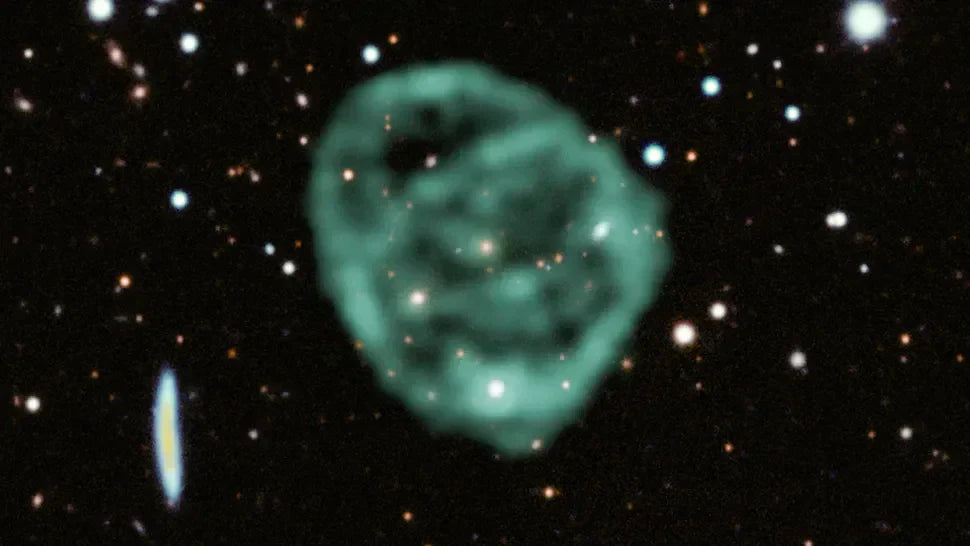
Do Galactic Big Bangs Leave a Mark?
Do Galactic Big Bangs Leave a Mark?
Exploring ORCs and the Afterglow of Expansion
If the Big Bang wasn’t a one-time event—but rather a galaxy-sized eruption that happens over and over across the infinite cosmos—wouldn’t there be some kind of mark left behind?
According to Cosmic Seed Theory, the answer is yes.
And we might already be seeing them.
Enter the ORCs: Odd Radio Circles
In recent years, astronomers have discovered strange structures known as ORCs—vast, faint radio circles surrounding certain galaxies. These formations are unlike anything seen before: huge glowing halos of radio waves, often with no clear explanation.
Under the standard model, ORCs are a mystery.
Under Cosmic Seed Theory, they might be the cosmic aftershock.
A New Kind of Blast Radius
In CST, a galactic Big Bang occurs when a supermassive black hole reaches a critical mass and explodes outward—releasing compressed space, matter, and energy in all directions. Much of this becomes the galaxy itself, but some of it pushes further, rippling through surrounding space.
Over billions of years, these ripples may leave behind radio fingerprints—faint circular shockwaves in the void around the galaxy. ORCs may be the blast radius from a local expansion event that happened long ago.
Think of them as cosmic tree rings, still glowing with the memory of their birth.
Not All Galaxies Leave a Ring
Not every galactic Big Bang would leave an ORC behind. Some may be too small, too dense, or disrupted by mergers. But when conditions are right—like in a clean environment or a perfectly timed detonation—we might get a lasting signature in radio wavelengths.
And we’re just now starting to notice.
The Future of ORC Research
If ORCs are echoes of past Big Bangs, they could be used to date galactic expansion events, study their size and energy, or even track how many times a galaxy has erupted. Some galaxies even appear to have multiple rings, could they have experienced more than one expansion?
More data is needed, but CST provides a framework that makes ORCs not just anomalies…
…but evidence.
